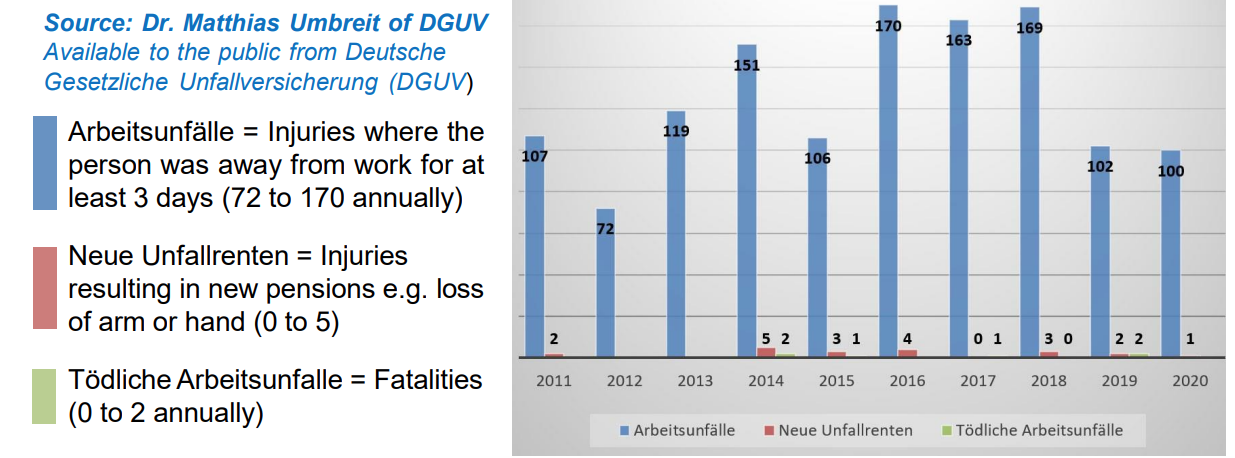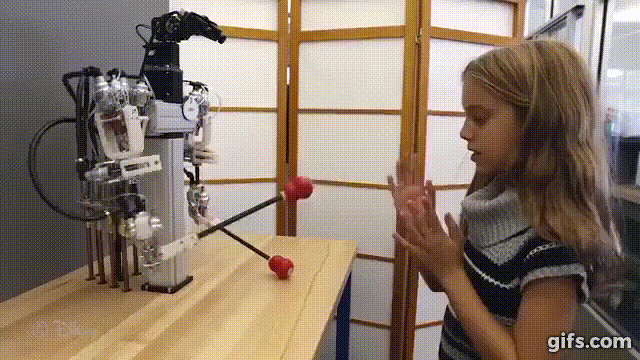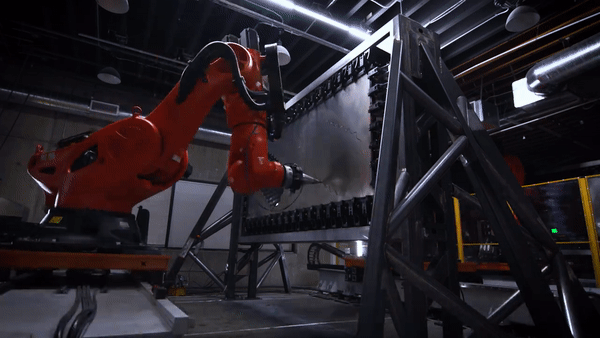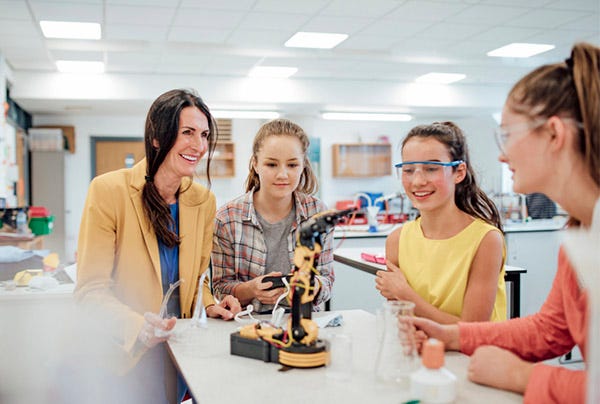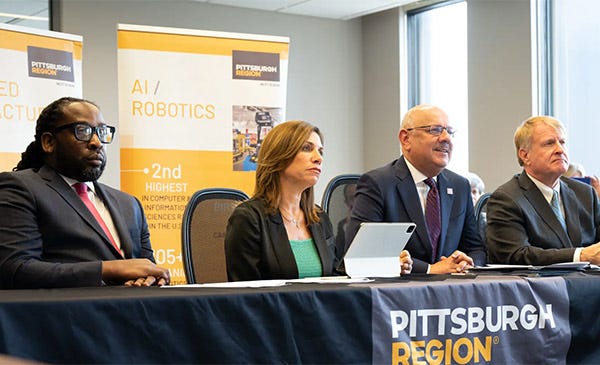Making Safety A Priority For Robots & People
The International Robot Safety Conference was this week, so let's talk about that.
Aaron’s Thoughts On The Week
"A robot may not injure a human being, or, through inaction, allow a human being to come to harm." ~ Isaac Asimov
This week, the International Robot Safety Conference (IRSC) was held in Pittsburgh. This was a bit of a homecoming for me, because my very first IRSC was many years ago in Pittsburgh as well. We were in a hotel conference room down the road from this year’s meetup with a decent crowd. This year we were at the Convention Center and a much bigger group.
Not only was this a great sign of how much our industry continues to grow, but that there is a growing interest in safety due to the increase in diversity of robot applications coming to market. Over half, if not two-thirds, of the attendees were attending IRSC for the first time, which is just another great sign of the growing need and desire to understanding robot safety.
When I first attended IRSC, the focus was heavily on robotic arms, especially these new “collaborative robots” that were coming to market. There was even talk about the need to start developing safety standards for these new mobile robots with new autonomous features starting to appear in warehouses and factories. At the time, my employer was getting very interested in deploying more mobile robots into our operations so I knew I better get involved in helping to develop these types of standards. Not only to ensure the new standards made sense in the real world applications we were going to put them in, but that we knew how to use the standards and apply them to our applications. That is when I officially started my life in standards development and I never looked back. IRSC very much changed my life.
We do this job of developing standards and attending events like IRSC, because robot safety can change people’s lives if we don’t get it right. Roberta Nelson Shea, the Chief Compliance Officer for Universal Robots, shared the graph below from Germany showing the available safety data for robot incidents (unfortunately, the US data is not very complete, but is considered to be similar). The takeaway from the German data is that even as robot installations are increasing at a blistering pace, incidents appear to be going down. That is a great sign that the industry as a whole is taking safety very seriously.
At IRSC, we also got two major updates - a newly published Industrial Mobile Robot standard (R15.08-2) and a glimpse into the new ISO 10218 that should be publish next year.
As I mentioned earlier, at my first IRSC the talk was underway to develop the first standard for Industrial Mobile Robots (IMRs). In 2020, R15.08 Part 1 was published that provided manufacturers of IMRs a standard to follow. At this IRSC, R15.08 Part 2 for integrators of IMRs was released. It was also announced that Part 3 for End Users of IMRs is now in development. So we continue to move robot safety standards into our growing robot application portfolio.
The other update that was given was on ISO 10218, which is THE STANDARD when it comes to Industrial Robots. Last updated in 2011, the newest 2024 version will show how much robotics has changed and all of the new aspects that will need to be addressed. The 2011 version was 115 pages and that covered Part 1 for Manufacturers and Part 2 for Integrators. Right now it appears the 2024 version will come in around 400 pages!! The new Part 1 alone will be bigger than the 2011 full version.
There are going to be some major changes and there is a push to actually have a companion document published that will list out all of the changes. This will help readers see all of the key changes. One of the biggest will be to clarify the notion that there are no such thing as collaborative robots, only collaborative applications. This is going to be a very much needed due to how the term collaborative robot has been misused by some in the industry leading to confusion and some upset end users.
To put a bow on IRSC, I am reminded of the quote below:
If you are not willing to put your loved one into your robot application, then maybe you should rethink the application.
Bill Edwards, Yaskawa Motoman
We know that there is risk in everything we do. Every week, I get on an airplane and fly at high altitudes and at amazing speeds. There is a chance something will go wrong. However, I have faith in those safety professionals in the airline industry to keep me and my loved ones safe. That is the same mentality of our robot safety professionals - everyone goes home at the end of the day with everything they started the day with.
Our industry has a great safety record. We know that there will continue to be incidents, but we learn from them, we share them at events like IRSC, and we help everyone get better for everyone’s sake. As new technologies and processes come to market, we will work together to incorporate them into the next updates to the standards. We not only have an obligation to those working with robots today, but future generations (in more ways that one).
Robot News Of The Week
Machina Labs brings in $32M for robotic sheet metal forming
Bravo to the Machina Labs team that keeps pushing the promise of more robots doing more complex manufacturing tasks. The company plans to use the latest round of funding to meet accelerating customer demands, further intensify its research initiatives, and continue delivering innovative systems that exceed customer expectations.
Robotics companies raise $851M in August 2023
Speaking of investments, August was another good month for investment activity. This $851 Million brings the grand 2023 total to $8.85 Billion.
The Construction Industry is in a period of new technologies and new process. So where is it all leading to and what is still missing? This roadmap by ASTM International provides guidance of what is already out on the market, what is in the pipeline, and what is still needed.
Robot Research In The News
New AI approach yields ‘athletically intelligent’ robotic dog
AI researchers at Stanford University and Shanghai Qi Zhi Institute say they have developed a new vision-based algorithm that helps robodogs scale high objects, leap across gaps, crawl under thresholds, and squeeze through crevices – and then bolt to the next challenge. The algorithm represents the brains of the robodog.
Making radiation maps with robot dogs
Scientists at the Department of Energy's Lawrence Berkeley National Laboratory (Berkeley Lab) are teaching a robotic dog to intelligently hunt out radiological material using a self-contained suite of sensors on its back. It's fair to say radiation mapping has come a long way.
Robot Workforce Stories Of The Week
ARM Institute Endorses Seven More Training Programs for Robotics in Manufacturing
The ARM Institute continues evaluate programs across the US for endorsement. These endorsements help students and employers to better evaluate program quality.
“Effective training programs are critical to course-correcting, engaging the next generation of manufacturers, and helping to upskill existing workers. The ARM Institute team congratulates these programs on this well-deserved recognition,” stated Lisa Masciantonio, chief workforce officer at the ARM Institute.
“Carnegie Mellon University is committed to connecting today’s workers with cutting-edge robotics and advanced manufacturing skills,” said Farnam Jahanian, president of Carnegie Mellon University (CMU). “The nine grants we’re awarding — and the nine projects they support — will position our fellow residents and Southwest Pennsylvania to capture economic opportunities and catalyze inclusive growth that our region can build upon for years to come.”
Robot Video Of The Week
The team at Disney Research once again has broken the internet with one of their newest robots. This one was introduced at IROS last week, but the videos released after the event are just mind blowing. Read more about the little guy here.
Upcoming Robot Events
Oct. 18 Robotics Applications Conference (Virtual)
Oct. 18-19 ROBOBusiness (Santa Clara, CA)
Oct. 18-20 ROSCon (New Orleans, LA)
Oct. 30 - Nov. 3 International Conf. on Advanced Manufacturing (Washington DC)
Dec. 8-10 - International Conference on Mechanical Engineering and Robotics Research (Krakow, Poland)
Dec. 12-14 IEEE-RAS Humanoids (Austin, TX)
Dec. 14-16 International Conferences on Robotics, Automation, and Artificial Intelligence (Singapore)
Jan. 15-17 A3 Business Forum (Orlando, FL)
Mar. 11-14 ACM/IEEE International Conference on Human Robot Interaction (Boulder, CO)
Mar. 11-14 MODEX (Atlanta, GA)
Apr. 7-10 Haptics Symposium (Los Angeles, CA)
Apr. 14-17 International Conference on Soft Robotics (San Diego, CA)
May 1-2 The Robotics Summit & Expo (Boston, MA)
May 6-9 Automate (Chicago, IL)
May 13-17 IEEE-ICRA (Yokohama, Japan)
Oct. 1-3 International Robot Safety Conference 2024 (Cincinnati, OH)
Oct. 8-10 Autonomous Mobile Robots and Logistics 2024 (Memphis, TN)


